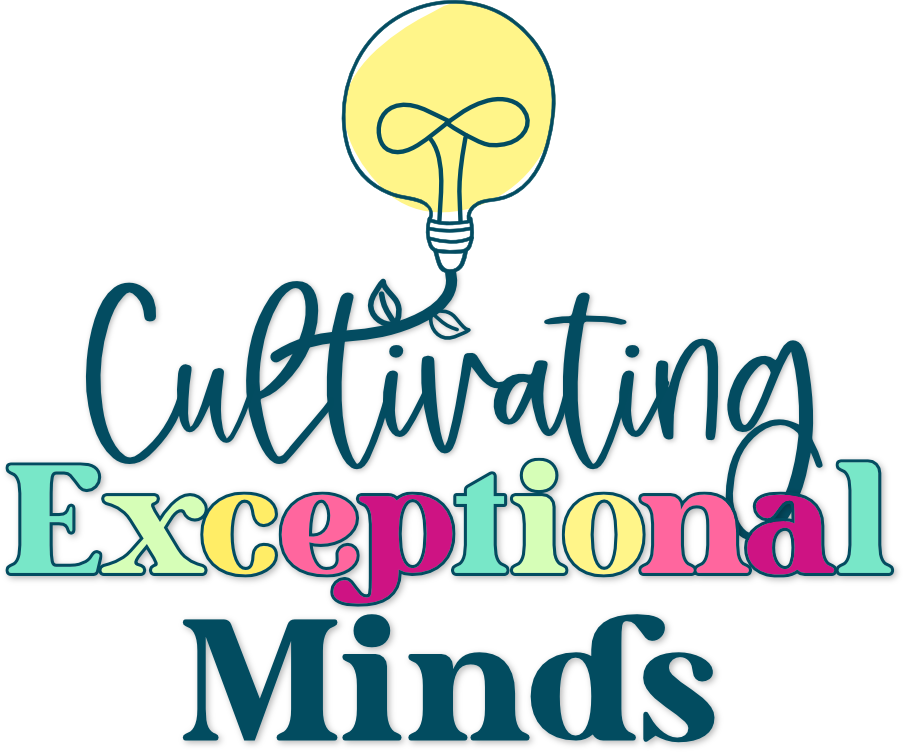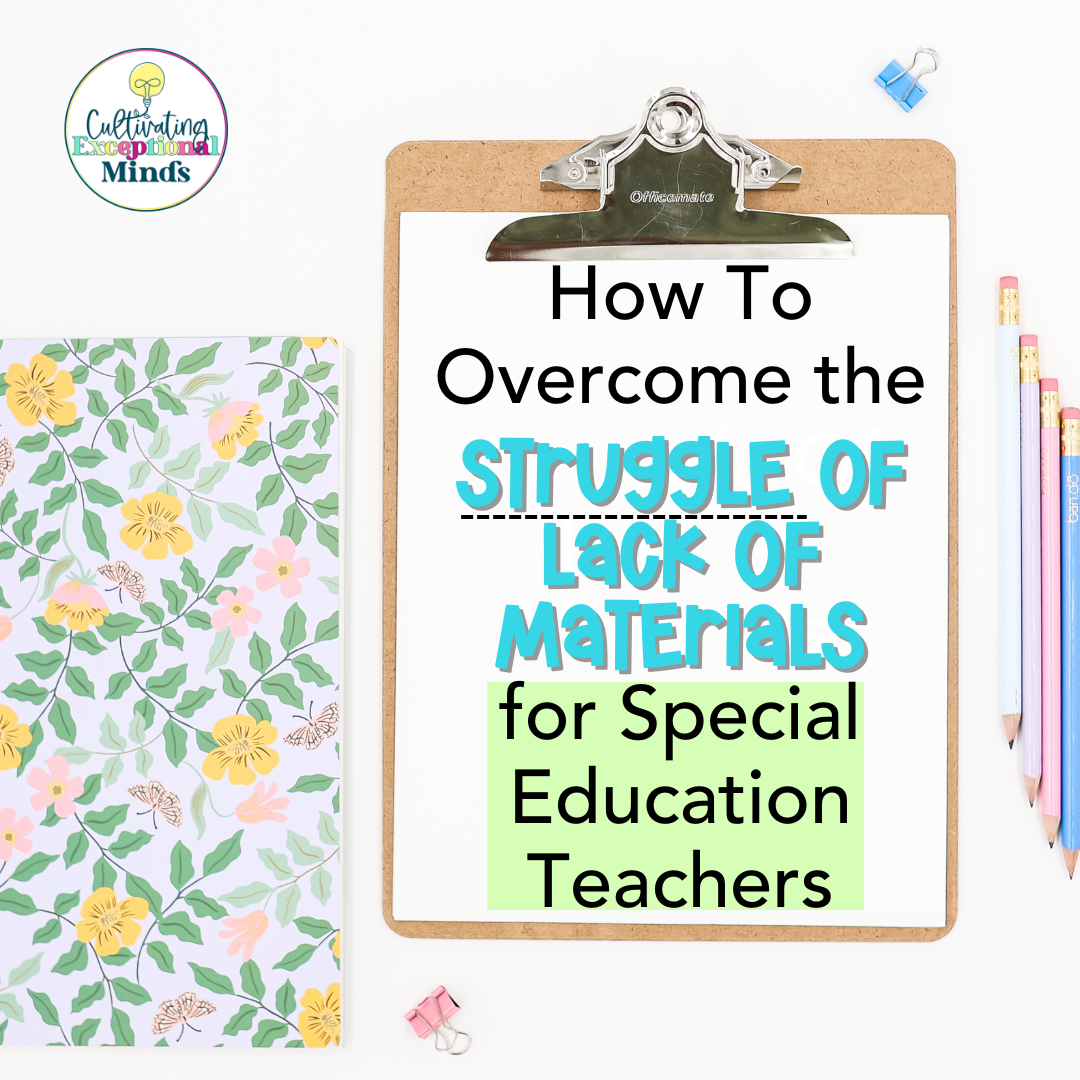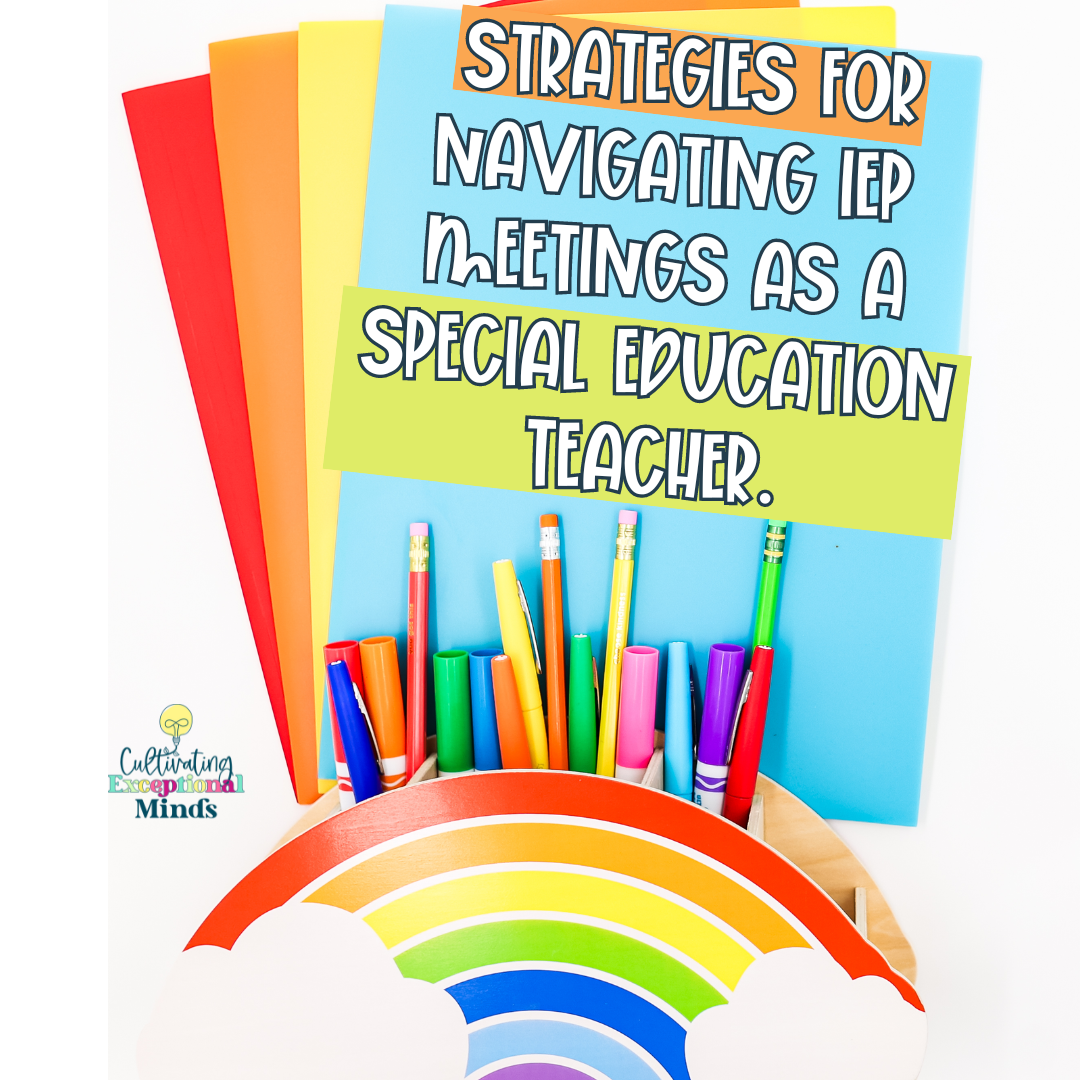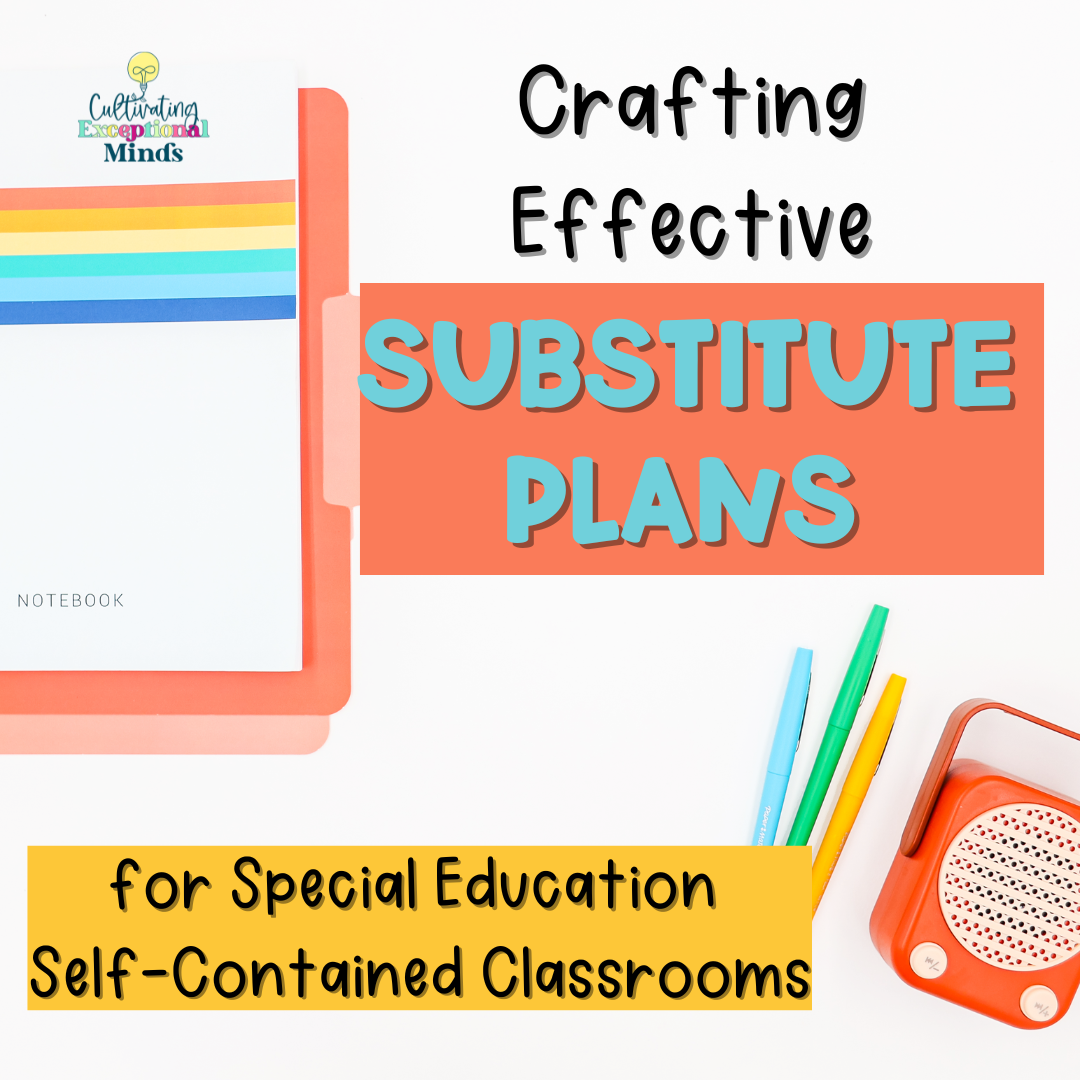How to Use Visual Supports in Special Education to Improve Student Success
Why Visual Supports Are Essential in Special Education
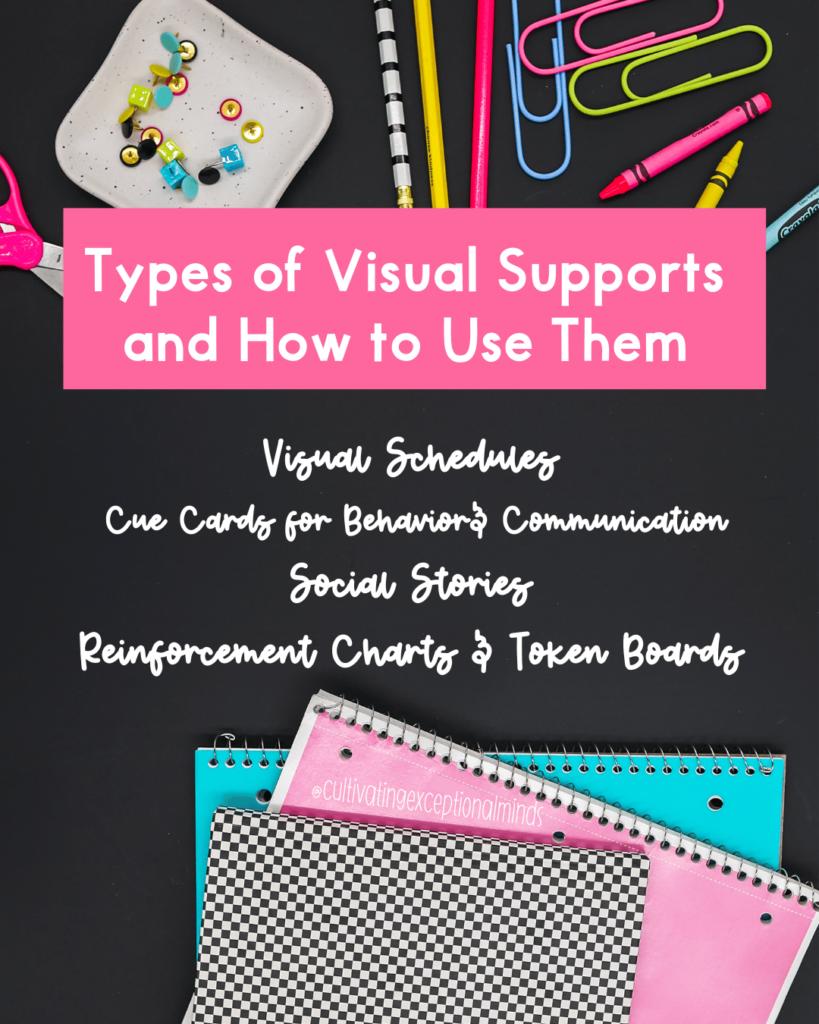
Special education teachers often face the challenge of communicating effectively with students who struggle with verbal expression, transitions, or understanding abstract concepts.
Why Visual Supports Are Essential in Special Education
Visual supports bridge that gap, making learning more accessible and classroom routines smoother.
But why are visual supports in special education so powerful?
They:
✅ Provide clear expectations for students.
✅ Reduce verbal prompts and teacher frustration.
✅ Help students navigate routines and transitions.
✅ Support self-regulation and behavior management.
Using visual schedules, social stories, behavior cue cards, and reinforcement charts can empower students by providing the structure they need to succeed.
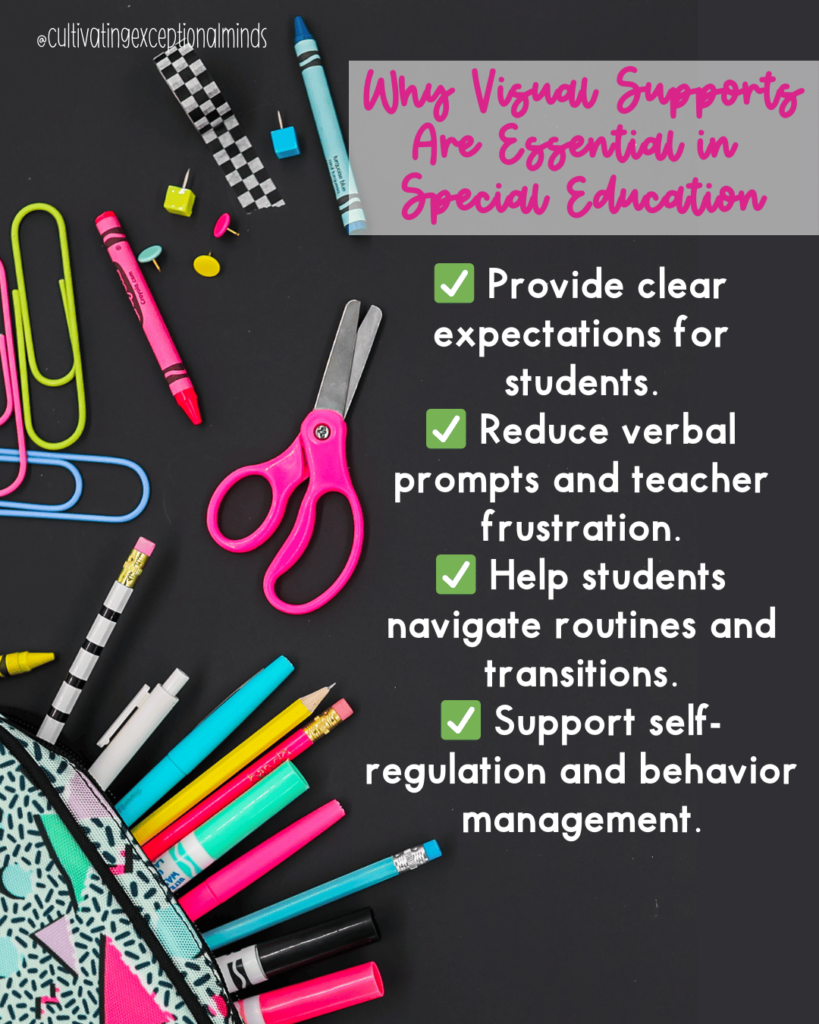
Types of Visual Supports and How to Use Them
📌 Visual Schedules
- Help students anticipate what’s next and reduce anxiety.
- Use Velcro, magnetic boards, or digital apps for easy changes.
- Example: A morning routine schedule with pictures and words.
📌 Cue Cards for Behavior and Communication
- Simple visuals that help students understand expectations.
- Common types: “Quiet Voice,” “Raise Hand,” and “Break Time” cards.
- Strategy: Keep cue cards easily accessible for quick reminders.
📌 Social Stories
- Explain social situations step-by-step using simple language and visuals.
- Example: “How to Ask for Help” social story for a student struggling with self-advocacy.
- Tip: Use real photos of students to personalize them.
📌 Reinforcement Charts & Token Boards
- Motivate students by visually tracking behavior or progress.
- Example: Earning stars for completing tasks, leading to a preferred reward.
- Tip: Allow students to choose their rewards for increased motivation.
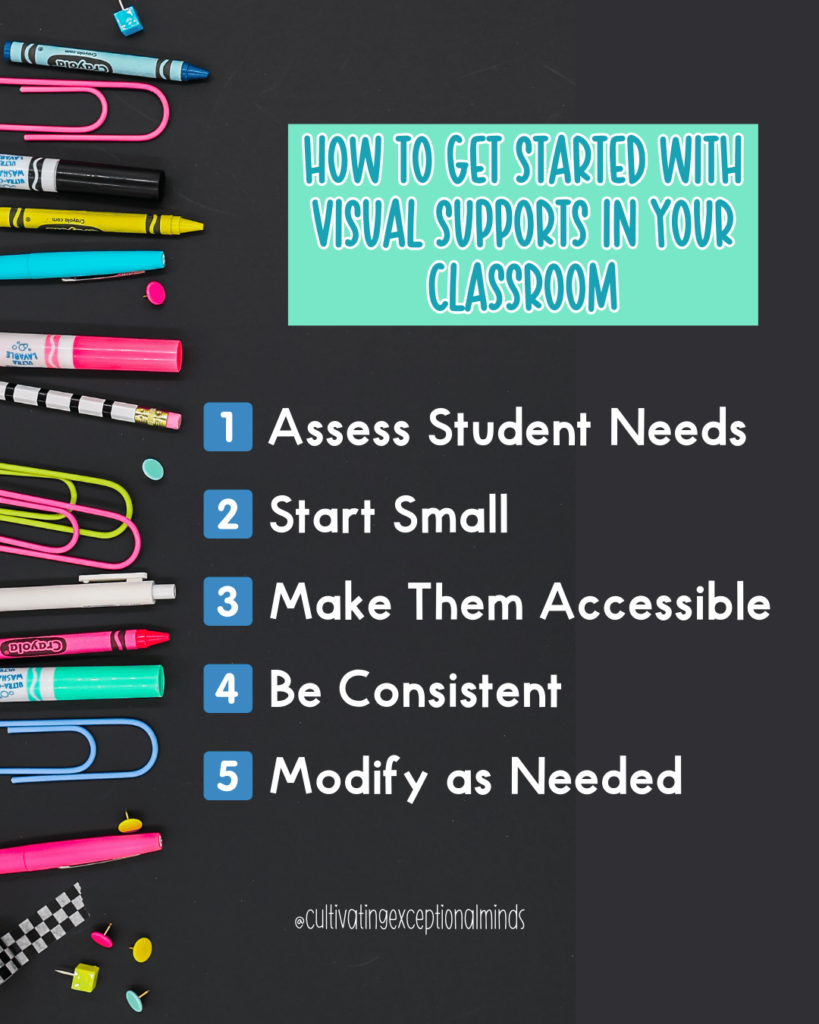
How to Get Started with Visual Supports in Your Classroom
1️⃣ Assess Student Needs – Identify where students struggle with understanding instructions, behaviors, or routines.
2️⃣ Start Small – Introduce one or two visual supports before adding more.
3️⃣ Make Them Accessible – Place schedules, cue cards, or token boards where students can easily see and use them.
4️⃣ Be Consistent – Reinforce the use of visuals daily.
5️⃣ Modify as Needed – Adjust supports based on student growth and needs.
🎯 Want Done-for-You Visual Supports?
Check out our Visual Supports Toolkit on TPT for editable templates & ready-to-use printables for How to Use Visual Supports in Special Education to Improve Student Success!
📢 Also, don’t forget to check out our podcast for even more visual support tips!
